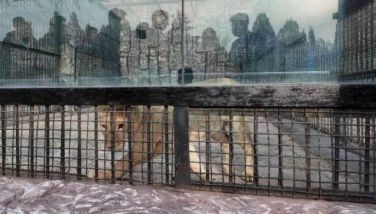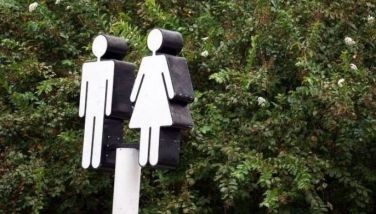SKorea restores capital gate to 14th century glory
SEOUL, South Korea — Five years after an arsonist destroyed it, the stone-and-wood southern gate to the old walled capital of Seoul has been painstakingly restored to its late 14th century glory by a small army of master craftsmen using traditional tools.
From the hand-carved stones of the walls flanking Sungnyemun gate, to the finely wrought touches on the inner beams of the graceful, upwardly curving roof, each detail of what's considered the country's top treasure is meant to harken to the day the gate was completed in 1398. On the ceiling beneath the center archway two large whiskered and horned dragons are rendered in vibrant yellow, green, blue, pink and orange scales.
Ahead of the landmark's public opening Saturday, reporters on Monday toured the gate where royal officials of the Joseon Dynasty unveiled policies, offered prayers for rain and hung the heads of executed criminals.
The two-story pavilion stands in vivid contrast to the surrounding glass-and-steel skyscrapers and the bustling, traffic-choked streets that radiate from the gate into a city that has seemed to be in a perpetual building frenzy since emerging from the rubble of the 1950-53 Korean War.
A team led by master carpenters, tile makers, stone carvers, blacksmiths and painters labored to restore the gate — work that officials say could have been done in one to two years using modern tools and methods.
Instead, workers trimmed timber with axes and chisels, hammered massive stones into shape, fired handmade roof tiles in kilns before affixing them to the roof using traditional tools and worked in as much of the surviving original timber as possible. Workers even wore traditional Korean clothing, regardless of the weather.
"Traditional methods guarantee a more natural and authentic look, whereas machines produce a glossy but artificial feel," said Choi Jong-deok, a government official who oversaw the project until earlier this year.
The gate, also known as Namdaemun, was destroyed in February 2008 by a man angry over how the government handled a land dispute with him. The arsonist is serving 10 years in prison. The fire destroyed 90 percent of the gate's upper floor and 10 percent of its lower floor, Seoul's Cultural Heritage Administration said.
The loss of the gate in a massive, manmade fire shocked South Koreans, many of whom have a deep emotional attachment to Sungnyemun and view it as the public face of their architectural heritage. The gate, earlier renovated in the 1960s, is a staple in government and business publications promoting visits to South Korea.
The restoration cost 25 billion Korean won ($22.5 million), officials said. The gate has been fitted with heat and flame detectors, alarms, sprinklers and 18 CCTVs.
- Latest
- Trending




























